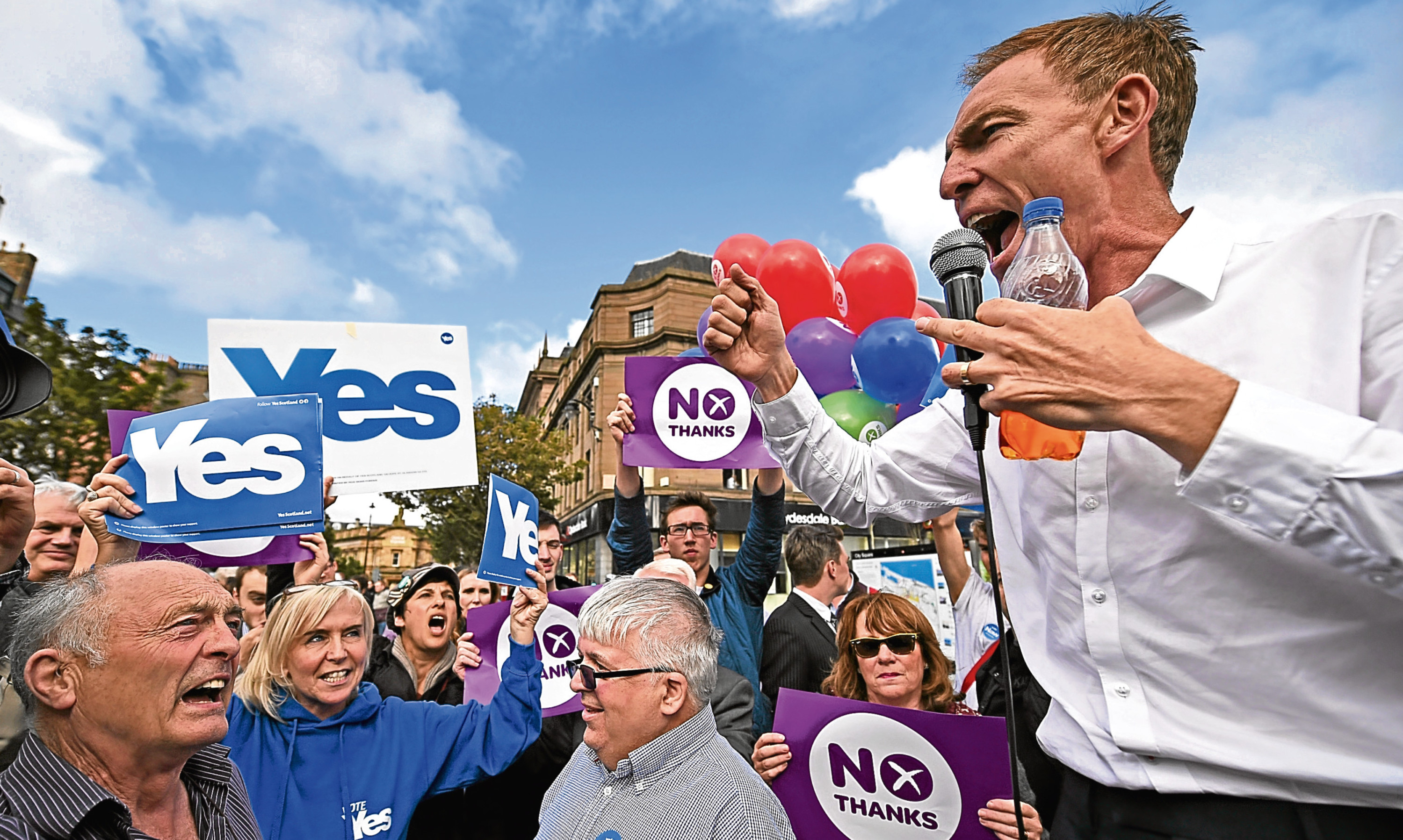When Scotland’s lone Tory MP said the UK government was not afraid of holding a second independence referendum, it was easy for the Nationalists to mock.
David Mundell, the Scottish Secretary, was engaging in damage limitation, after one of his cabinet colleagues in London suggested Westminster would block a new ballot.
When the Secretary of State for Defence, Michael Fallon, refused to repeat that threat he became an easy target for the increasingly vituperative Nicola Sturgeon.
The UK government “was running a wee bit feart” of a fresh vote on separation, she taunted, scoring what is these days quite a rare point for her side.
Daft remark
It was a daft remark from Fallon, given the political climate in Scotland right now but how was he to know that, stuck in his Whitehall department?
Mundell, though, would surely have winced at so clumsy an intervention from the south, providing ready ammunition for the Nationalists, who having made a complete hash of their Brexit strategy, need every help they can get from Westminster.
Mundell hastened to recoup lost ground, saying during an interview on BBC Scotland’s Sunday Politics that he wasn’t scared of another referendum because he was confident the Unionists would win.
https://www.thecourier.co.uk/fp/news/politics/scottish-politics/365652/exclusive-uk-government-preparing-nicola-sturgeon-demand-indyref2/
What did worry him, however, was the prospect of Scotland tearing itself apart all over again.
“I dread it because I think it would be a divisive and seriously unpleasant event which would set Scot against Scot and I don’t think people want to see that,” he said.
He is quite right that people don’t want to turn the clock back. Recent polls have confirmed that, with even former Yes voters now reluctant to be dragged into combat once more.
In fact, only 27% of Scots now want a new vote on the constitution, with 51% against holding a referendum within the next few years, according to the latest polling.
It is hard to believe how selective memories are from just over two years ago but those who would have us redraw the battle lines don’t remember it as I do.
Kevin Pringle, right hand man to Alex Salmond in 2014, wrote the other day that both camps had behaved badly in the bitter lead-up to that “once in a generation” decision.
The narrative from the secessionists is usually even more fictionalised than this.
From their perspective, the indyref represented an outpouring of joyfulness. It was a very long party that politicised thousands of previously apathetic Scots and brought people together in a common cause.
It did do that but only if you found yourself in the Yes camp. Those of us who rejected constitutional upheaval had a different experience of 2014.
Two weeks before the vote, Jim Murphy, soon to become Scottish Labour leader, resumed his tour of Scottish cities, taking the Better Together message to voters from his platform of Irn-Bru crates.
He had embarked, if you recall, on 100 towns in 100 days but had been forced to call a temporary halt after the “heckling” he had been subjected to got out of hand.
The SNP may deny now what happened back then but there were plenty of witnesses. One Courier reader (whom I quoted at the time), said he had “watched in horror as the Yes supporting bullies harassed and abused” Murphy.
The organised intimidation by elements – by no means all – of the Yes campaign left a pall over Scotland.
There was an undercurrent of intolerance that accompanied what many in the Yes movement still insist was a positive energising of the grassroots.
Two years ago, Better Together billboards, from Perth to Dundee, were defaced and destroyed, while Yes ones remained intact. No voters, as canvassers recorded, worried that their windows would be smashed in if they put up posters.
Without even mentioning the online sniping of the militant cybernats, the referendum Scotland endured was an ugly episode in this country’s history. Mundell’s “unpleasant” is putting it rather mildly.
Relief
When Salmond was defeated, there was relief rather than glee on the Unionist side. We had seen how the Nationalists treated people who disagreed with them and we feared for Scotland’s future if they had won a free rein.
Fortunately, common sense prevailed and a clear majority of the electorate opted out of a separatist dystopia.
Of course we do not want a repeat of that sorry chapter. But now it appears that many, once eager, Nationalists are also reluctant to revisit the recent past.
Scotland gained nothing from September 2014 and lost much. If the SNP fought that contest ruthlessly, imagine how they would approach a second referendum, when they have even more at stake.
Nationalist cheerleaders might think any fight is worth having and the end justifies the means but Scotland’s heart just isn’t in it this time round.




